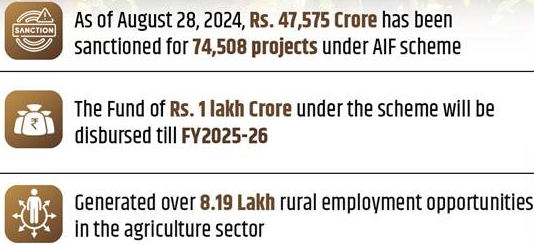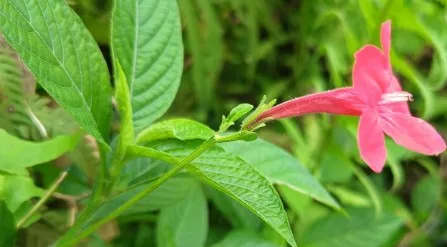Six Years of Pradhan Mantri Shram Yogi Maandhan Yojana (PM-SYM)
Syllabus: GS2/ Welfare Schemes
In Context
- The Pradhan Mantri Shram Yogi Maandhan (PM-SYM) Scheme was launched in 2019 to provide pension security for unorganized workers.
Background
- India’s unorganized sector contributes nearly 50% of the GDP, employing millions in occupations like street vending, construction, agriculture, and domestic work.
- However, financial insecurity after retirement remains a major concern, to address this issue the PM-SYM scheme was launched.
- As of 2024, over 30.51 crore workers are registered on the e-Shram portal. E-Shram portal is a flagship initiative by the Government of India to support and empower the unorganized workforce.
- Registered workers receive a UAN linked to their Aadhaar, enabling seamless access to benefits.
Pradhan Mantri Shram Yogi Maandhan (PM-SYM) Scheme
- About: It is a voluntary and contributory pension scheme, ensuring a minimum ₹3,000 monthly pension after the age of 60 years.
- Spouses receive 50% of pension if the subscriber dies after retirement.
- Spouses can continue or exit the scheme if the beneficiary dies before 60.
- Implementation: Ministry of Labour & Employment and managed by the Life Insurance Corporation of India (LIC).
- Eligibility: Age: 18–40 years, monthly income ₹15,000 or less, not covered under EPF/ESIC/NPS.
- Contribution Structure: monthly contribution ₹55 to ₹200, depending on the age of joining.
- Enrollment: Through Common Service Centres (CSC) or the Maandhan portal.
- Implementation and Current Status: 46.12 lakh enrollments (March 2025) across 36 States/UTs. Top 3 States are Haryana, Uttar Pradesh, Maharashtra.
Source: PIB
Doctrine of Reasonable Classifications
Syllabus: GS2/ Polity and Governance
Context
- The Supreme Court’s ruling in State of West Bengal v. Anwar Ali Sarkar (1952) laid the foundation for the “reasonable classification” test under Article 14 of the Indian Constitution.
About
- The West Bengal state legislature passed the West Bengal Special Courts Act 1950 to set up special courts for the speedy trial of certain offences particularly those related to communal violence and riots.
- The Act was controversial as it gave the government wide powers to establish and control the special courts.
- The Court held that the Act created an arbitrary classification between accused persons and thus offended the doctrine of equality before the law.
| Article 14 of Constitution – Article 14 says that the State shall not deny to any person equality before the law or the equal protection of the laws within the territory of India. 1. This provision confers rights on all persons whether citizens or foreigners. – The word ‘person’ includes legal persons, viz, statutory corporations, companies, registered societies or any other type of legal person. Judgements related to Article 14 – In the case of E.P. Royappa v. State of Tamil Nadu (1973), the Supreme Court of India expanded the scope of Article 14 of the Constitution, establishing that it prohibits arbitrary state action, not just discriminatory treatment, and that state action must be rational and justifiable. – Ram Krishna Dalmia vs. Justice Tendolkar (1958) held that Article 14 prohibits class legislation and not reasonable classification, which is done for legislative purposes. |
Source: IE
Mission 300
Syllabus: GS2/Governance, GS3/ Energy
Context
- In 2024, the World Bank Group and the African Development Bank together launched Mission 300.
About
- Mission 300: Aims to connect 300 million people to electricity in Sub-Saharan Africa by 2030.
- The ambitious initiative builds on years of groundwork, much of it led by the Energy Sector Management Assistance Program (ESMAP).
- Goal: Accelerate electrification while ensuring cleaner, diversified energy sources, economic growth, and job creation.
- Current Challenge: Nearly 600 million people in Sub-Saharan Africa lack electricity, making up 83% of the global unelectrified population.
- Key Focus Areas:
- Investment in generation, transmission, distribution, and regional interconnection.
- Sector reform to ensure reliable, affordable, and quality power.
India’s Journey Towards Electrification
- During Pre-Independence (Before 1947), there was limited electrification in urban areas, post-Independence the focus was on rural electrification and state control over electricity.
- In the 1980s, Rural Electrification Corporation (REC) was formed to support rural electrification.
- 1990s: Private sector participation increased; Electricity Act 2003 restructured the sector.
- India has achieved 100% electrification by 2021.
- Challenges Overcome: Initial issues included high connection costs, infrastructure gaps, and logistical hurdles.
- Key Success (2017-2019): In 18 months, over 26 million households were electrified, setting a record for the fastest electrification drive.
- Relevance to Africa: India’s rapid progress offers valuable insights into how Sub-Saharan Africa can tackle its energy access gap within a few years.
Source: DD News
Taj Trapezium Zone (TTZ)
Syllabus: GS3/ Environment
In News
- The Supreme Court directed Dehradun-based Forest Research Institute (FRI) to conduct tree census in the Taj Trapezium Zone.
About Taj Trapezium Zone
- Purpose: It is a 10,400 sq. km trapezoidal shape area to safeguard the Taj Mahal, Agra Fort, and Fatehpur Sikri (all UNESCO World Heritage Sites) from the damaging effects of air pollution.
- Establishment: In 1996 by the Supreme Court to control pollution affecting the Taj Mahal.
- SC Directive: The Supreme Court mandated that industries within the TTZ switch from using coal and coke to cleaner fuels like natural gas.
Source: HT
Agricultural Infrastructure Fund (AIF) Scheme
Syllabus: GS3/ Agriculture
Context
- Punjab has utilised 100% of the Rs 4,713 crore allocated to it by the Centre under the Agriculture Infrastructure Fund (AIF) scheme.
What is Agricultural Infrastructure Fund (AIF)?
- AIF was launched with an aim to provide medium to long-term financing for agriculture infrastructure projects at the post-harvest stage.
- The scheme is operational from 2020-21 to 2032-33.
- Under AIF, provision for Rs. 1 Lakh crore loan has been made through lending institutions with an interest rate cap of 9% on loans.
- Farmers, agripreneurs, primary agriculture cooperative societies, farmers producer organisations, start-ups, state sponsored public-private partnerships, state-agencies can apply for funds under this scheme.
Key features
- Viable Farming Assets: The scheme now includes the creation of infrastructure for ‘viable projects for building community farming assets’.
- Integrated Processing Projects: The list of eligible activities under AIF now includes integrated primary and secondary processing projects.
- However, standalone secondary projects remain ineligible and will continue to be covered under Ministry of Food Processing Industries (MoFPI) schemes.
- PM KUSUM Component-A Integration with the AIF has been allowed by the government.
- Interest Subvention: Offers 3% interest subvention per annum on loans up to ₹2 crore.
- Credit guarantee coverage through Credit Guarantee Fund Trust for Micro and Small Enterprises (CGTMSE).

Source: IE
Carbon Intensity
Syllabus: GS3/ Environment
Context
- Carbon intensity is a useful way to measure how much carbon a particular sector is emitting and how it has increased or decreased over time.
About
- Carbon intensity measures how much carbon dioxide (CO2) is released to produce a unit of electricity or other activity.
- The carbon intensity of electricity is measured in grams of CO2 per kilowatt hour (kWh).
- Example: The carbon intensity of the steel sector can be measured as the number of tonnes produced per tonne of carbon dioxide emitted.
- An entire country’s carbon intensity can be understood by dividing the growth in GDP per capita by the amount of carbon dioxide emitted.
- India’s annual per capita carbon emission is only about one-third of the global average.
Source: TH
Ruellia Elegans
Syllabus: GS3/ Environment
Context
- A recent study has raised concerns about the threat posed by Ruellia Elegans, to the native biodiversity of Assam.
About
- Ruellia Elegans, commonly known as the Brazilian petunia, Christmas pride, and wild petunia, is a flowering plant native to wet tropical biomes.
- The species derives its name from its elegant appearance.
- It is native to Brazil with bright red trumpet shaped flowers.
- It belongs to the Acanthoideae sub-family and is one of the four invasive Ruellia species in India, alongside Ruellia ciliatiflora, Ruellia simplex, and Ruellia tuberosa.
- India has six native species of Ruellia: Ruellia beddomei, Ruellia ciliata, Ruellia malabarica, Ruellia patula, Ruellia sibua, and Ruellia sivarajanii.
What are Invasive Species?
- Invasive plant species are non-native plants that spread aggressively and outcompete local flora for essential resources such as sunlight, water, and nutrients.
- They disrupt ecosystems by;
- Altering biodiversity and displacing native species.
- Contributing to the decline or extinction of endemic plants.

Source: TH
Previous article
ISRO Successfully Conducts PHTA for Semi-cryogenic Engines
Next article
MeitY Launches AIKosha and Other Initiatives